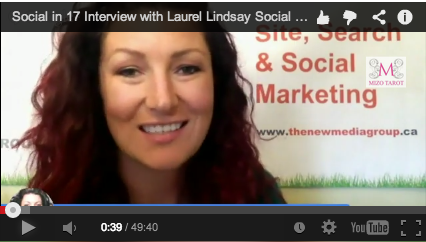 The societal shift towards instant gratification in our media has completely altered the way we think about producing and digesting the written word, with online blogs in particular being a major force in the changing habits of both writers and readers.
The societal shift towards instant gratification in our media has completely altered the way we think about producing and digesting the written word, with online blogs in particular being a major force in the changing habits of both writers and readers.
When people say they want to read an epic blog post, they’re no longer talking about the length. As sad as it might sound to those with dreams of grandeur, unless you are a specially talented wordsmith or raconteur, the 2000 word wall of text you wrote for your digital marketing blog is unlikely to engage many people.
People want quick fixes of pleasure to get them through the gruelling fifteen minute bus commute to work, lists of easily digestible facts that go well with a coffee, and bite-sized nuggets of information they can devour with their fries on their lunch break.
If you’re regularly producing content for your digital marketing blog but finding the amount of either traffic or interaction is lower than you’d hoped, it might be time to rethink what you thought you knew about your desired audience.
Plan for the scan
The first thing to understand when producing content for your digital marketing blog is that even those who read it probably don’t really read it. When digesting web content, people scan, and the way your blog posts are formatted will be a bigger factor in people reading and interacting with them than even the content itself.
Because your digital marketing blog may live or die by the format, it has to be clear. We all know the importance of a good headline, but subheadings are just as vital in breaking up your topics into easier to swallow chunks, and even helping the reader to decide if they can skip to the next paragraph.
Using keywords in the subheadings is a very good idea too. Not only does it help with SEO, but it will also reinforce the relevance of the article to your reader’s interest if they have found it through an organic search.
To boldly go
To help the reader of your digital marketing blog pick out the information they are looking for, making bold the key points will cause them to jump out from the page.
Using this technique benefits yourself as much as it does your audience. While you may like to think they care about every line in your posts as much as you do, and want to spend time taking everything in, they probably don’t.
So while guiding them to the parts they want to see and showing them what to skip over by making bold the important points might sound counterintuitive for those wanting all of their content to be read, your reader is actually more likely to read more of your other digital marketing blog posts if you’re making it easier for them to find and digest the information.
Words and pictures
Whether images or video, using multimedia in your blog posts is vital to stimulating your reader into taking the action you want them to take.
As well as providing a break from the words, and being another effective way of breaking up the wall of text, images and video can get across messages in a way plain text never can.
The important thing to remember is to keyword your multimedia, usually by renaming the file before uploading, to give your digital marketing blog another chance to be found on Google.
People are increasingly going straight to Image searches to find what they are looking for, but your multimedia will not show in the results if it still has a generic, alphanumeric title.
Because most people scan articles on the internet rather than reading them, making your digital marketing blog easier to digest by breaking up the wall of text with key worded multimedia, subheadings, and with the important points made bold is vital in allowing your audience to find you, and in keeping them coming back.
For a look at our One Minute Tips and more on this topic, check out our Youtube page here:
 Since its inception around a decade ago, Facebook has grown and evolved into something far bigger and far different to anything the creators could ever have imagined.
Since its inception around a decade ago, Facebook has grown and evolved into something far bigger and far different to anything the creators could ever have imagined.











